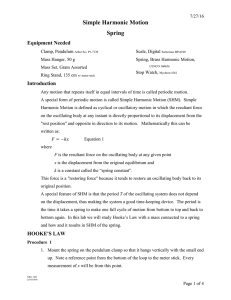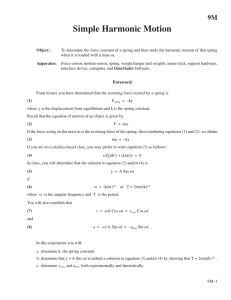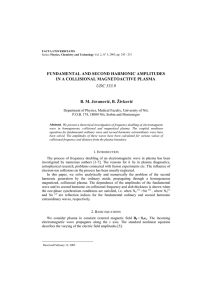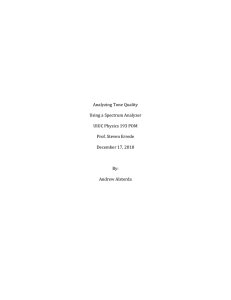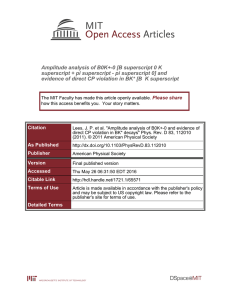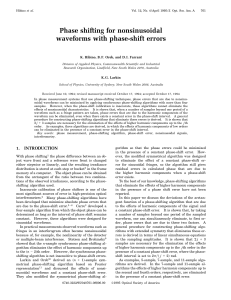LAB #10: Simple Harmonic Motion
advertisement
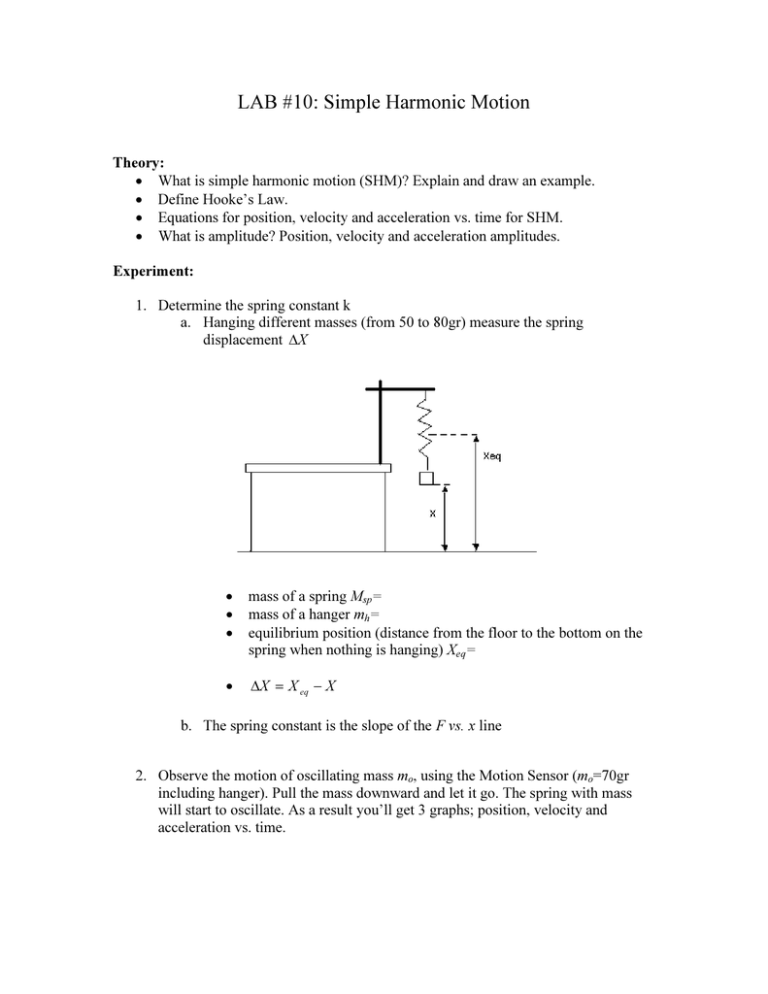
LAB #10: Simple Harmonic Motion Theory: • What is simple harmonic motion (SHM)? Explain and draw an example. • Define Hooke’s Law. • Equations for position, velocity and acceleration vs. time for SHM. • What is amplitude? Position, velocity and acceleration amplitudes. Experiment: 1. Determine the spring constant k a. Hanging different masses (from 50 to 80gr) measure the spring displacement ∆X • • • mass of a spring Msp= mass of a hanger mh= equilibrium position (distance from the floor to the bottom on the spring when nothing is hanging) Xeq= • ∆X = X eq − X b. The spring constant is the slope of the F vs. x line 2. Observe the motion of oscillating mass mo, using the Motion Sensor (mo=70gr including hanger). Pull the mass downward and let it go. The spring with mass will start to oscillate. As a result you’ll get 3 graphs; position, velocity and acceleration vs. time. a. Fit them using SINE FIT. Coefficients B from the sine series fits are period of oscillations and should have the same values form all three graphs. Calculate frequency f=1/B and its uncertainty using B from position plot. b. Calculate ωmeas=2πf and δωmeas k (where m=mo+1/3Msp) and δωth m Compare ωmeas with ωth Determine measured amplitudes that are A coefficients from the sine fits. Determine calculated amplitudes V0=X0ωth and V0=X0ωth2 and their uncertainties. Compare measured with calculated amplitudes. c. Calculate ω th = d. e. f. g.




